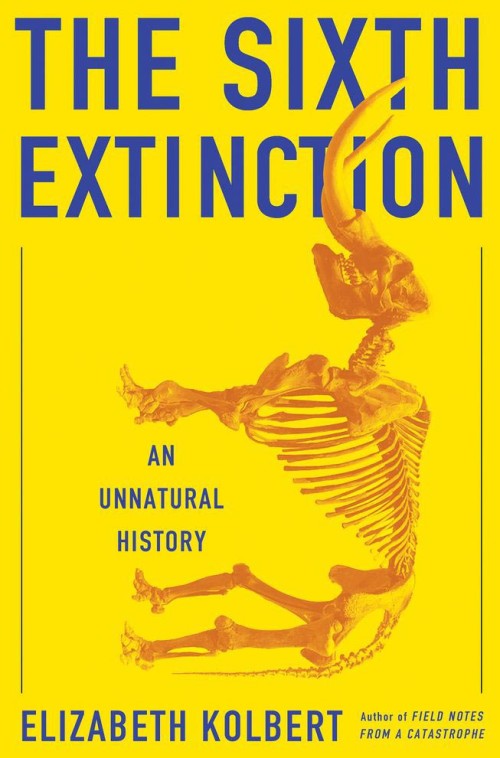by Elizabeth Kolbert
Henry Holt and Company, 2014
In the late 1980s, while in graduate school, I learned of mysterious mass die-offs (and eventual extinctions) of many frog species worldwide – events that played a big role in guiding me to a career in wildlife conservation. Perhaps the most well-known of these events was the disappearance of the golden toad, which during the rainy season could be found mating by the hundreds in Costa Rica’s Monteverde Cloud Forest Reserve – until 1989, when researchers could only locate a single male. By the time scientists determined that the mysterious frog killer was a chytrid fungus, undoubtedly spread by humans, it was too late for the golden toad and many other frog species.
In the first chapter of The Sixth Extinction, Elizabeth Kolbert describes the global decline of amphibians to set the stage for this important book about the loss of biodiversity, past and present. Through fossil records, scientists have pieced together compelling evidence about five mass-extinction events when the diversity of life on earth dropped suddenly and dramatically. The last of these occurred about 75 million years ago when an asteroid crashed into earth, wiping out the dinosaurs. Many scientists now believe we are in the midst of the sixth extinction, but instead of an asteroid, the driving force is “one weedy species,” ourselves.
In this fascinating and highly informative book, Kolbert, who is a staff writer for New Yorker magazine, deftly describes how we have altered the planet’s biodiversity as no other species has before. She takes us into the field with an array of scientists – including geologists in Italy, paleontologists in New Jersey, botanists in the Amazon Basin, marine biologists studying the Great Barrier Reef, and biologists tracking the decline of bats in New York and Vermont – each providing compelling and moving accounts of species that we have lost or are in the midst of losing.
Kolbert also tracks how our understanding of mass extinctions has evolved over the centuries, from Lyell’s and Darwin’s view that, like evolution, extinction occurs “at a very slow pace – so slow that, at any given time, in any given place, it would not be surprising were it to go unnoticed.” She also describes a growing movement to recognize that we are in a new geological epoch, one in which humans have affected many geological-scale changes. Currently, the International Commission on Stratigraphy (the group responsible for maintaining the official timetable of earth’s history) is formally considering a proposal to name the new epoch the Anthropocene.
The Sixth Extinction is a powerful, thought-provoking book that shines a light on much of what we have to lose, whether it be amphibians – which have been around in their current form for about 250 million years and yet today are considered to be the world’s most endangered class of animals – or humanity itself. Near the end of the book, Kolbert poses the question, “In an extinction event of our own making, what happens to us?” A quote from ecologist Paul Ehrlich offers a fitting response: “In pushing other species to extinction, humanity is busy sawing off the limb on which it perches.”


